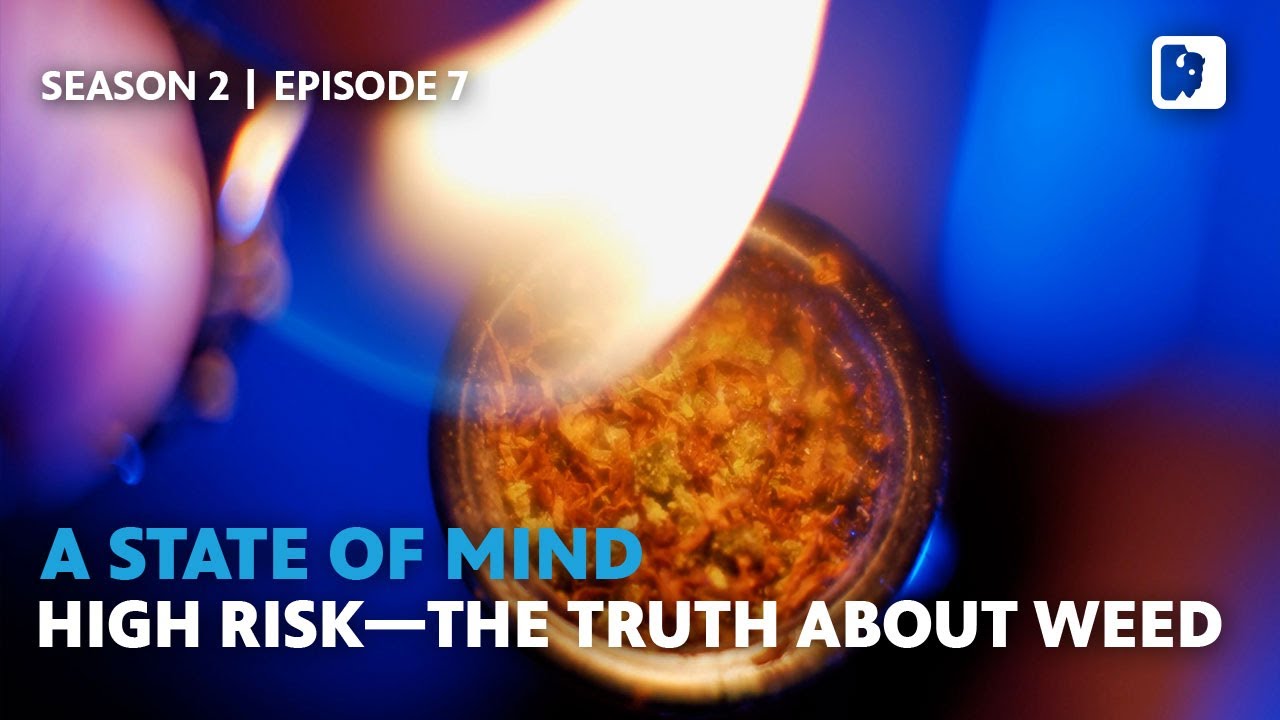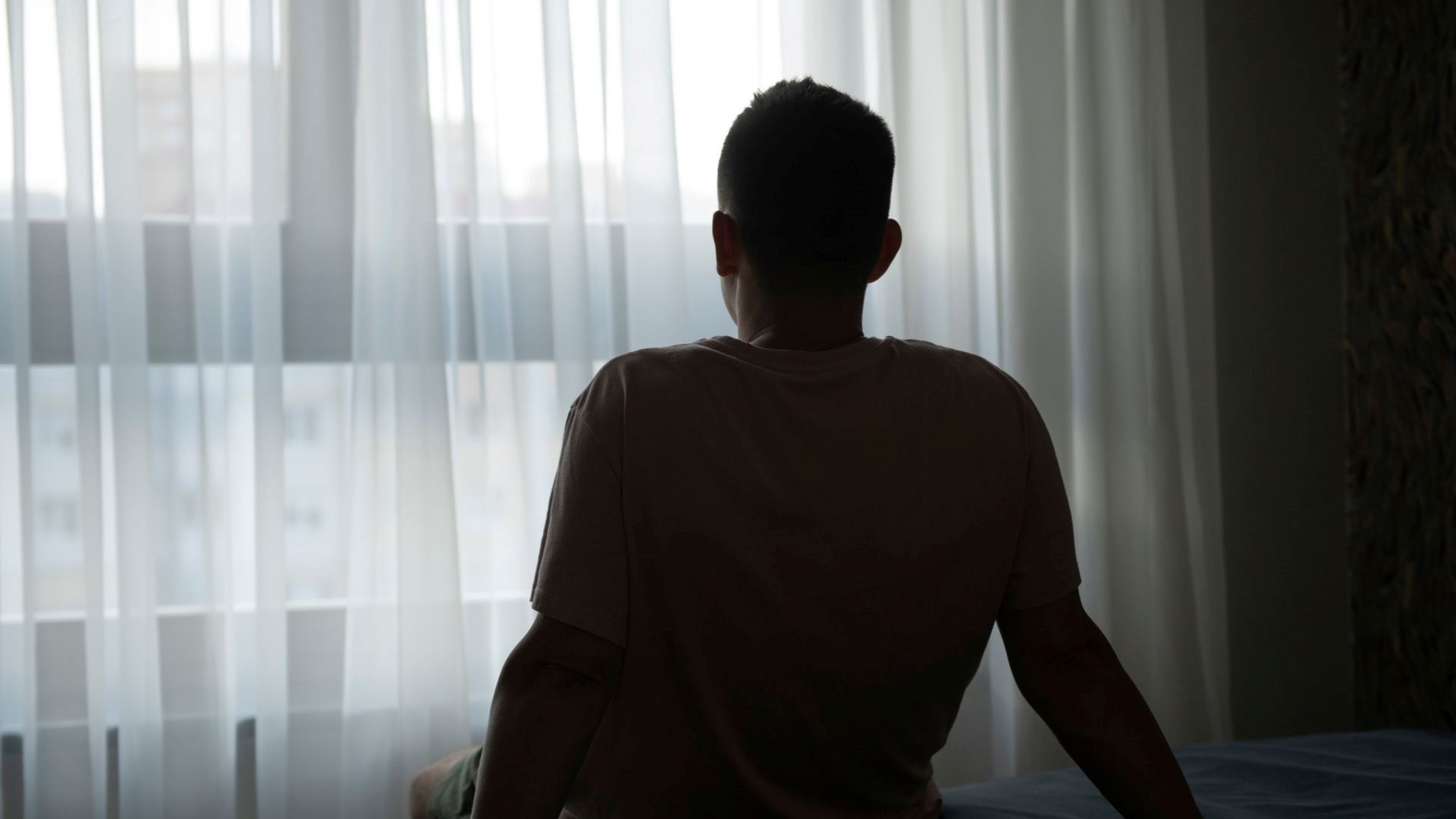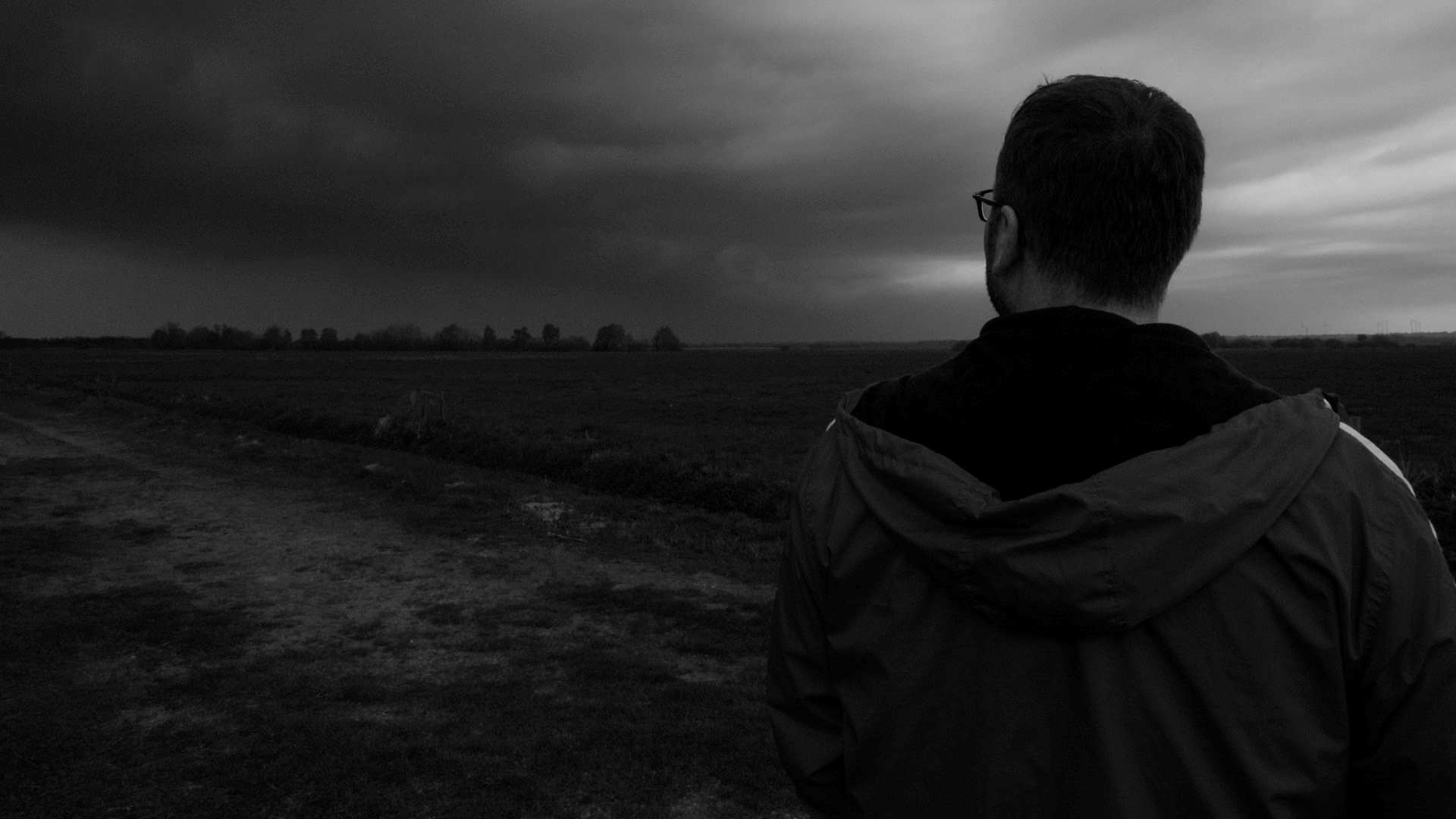
Marijuana is often portrayed as harmless, with countless individuals and media outlets emphasising its perceived benefits. However, the PBS documentary: Experts are sounding the alarm about the dark side of cannabis sheds light on an alarming concern overshadowed by the growing cannabis industry. This investigative feature explores the devastating impact of high-potency marijuana on mental health, particularly in young adults, and its link to cannabis-induced psychosis.
Through real-life stories and expert research, the documentary reveals how today’s marijuana—with THC concentrations reaching up to 100% in some products—is a far cry from the mild, recreational substance of decades past. Join us as we uncover the dangers of high-potency marijuana and the tragic consequences experienced by those featured in HIGH RISK.
Johnny Stack’s Story A Tragedy of Cannabis-Induced Psychosis
The documentary opens with the heartbreaking story of Johnny Stack, a once-aspiring, academically gifted teenager who spiralled into despair after falling victim to cannabis-induced psychosis. Johnny, who achieved a perfect SAT maths score, began using marijuana at the age of 14 during a high school party. Over time, he progressed from occasional use to consuming extremely potent THC products.
At the age of 18, Johnny obtained a medical marijuana card under dubious circumstances, as he had no chronic conditions or disorders. This escalation marked the beginning of a sharp decline in his mental health. “It was like an alien came and took my child,” recalled Laura Stack, Johnny’s mother. She described the harrowing transformation in her son’s personality, moving from kind-hearted to toxic and aggressive.
Despite multiple hospitalisations for cannabis-induced psychosis, Johnny repeatedly relapsed, convinced that his brain had healed. Tragically, his final psychotic episode involved extreme paranoia about the Russian mob and FBI surveillance, leading him to take his own life by jumping from a six-storey car park. He left his mother with these haunting final words, “Marijuana has ruined my mind and my life, and I’m sorry, Mama, I love you.”
Grace Davis Offers a Peer Perspective
Grace Davis, Johnny’s university friend, provides another perspective on the prevalence of marijuana use among young adults. She speaks candidly about the normalisation of cannabis use on college campuses, the ease of access through social media, and her personal struggles with addiction.
Grace shared how Johnny’s high tolerance for potent cannabis products contributed to his psychosis. She witnessed his paranoia firsthand, including beliefs that the “Russian mob was coming to get him” and that “the FBI was tracking his phone.” Despite her warnings to Johnny, she herself fell into daily use, leading to lasting paranoia even after two years of sobriety. “I know it wouldn’t have been this bad without marijuana,” Grace admits.
Bryn Spejcher’s Harrowing Experience
The documentary also focuses on Bryn, a Californian audiologist whose life took a tragic turn after experiencing cannabis-induced psychosis. After taking just two hits from a high-potency bong, Bryn fell into a psychotic episode marked by intense hallucinations and violent behaviour. This resulted in the tragic death of her friend Chad, whom she stabbed 108 times. Bryn’s case challenges the misconception that cannabis-induced psychosis only affects regular or heavy users.
Marijuana’s Escalating Potency
One of the most shocking revelations in the documentary is the dramatic rise in the potency of marijuana in recent decades. THC levels have surged from less than 3% in the 1980s to nearly 100% in modern concentrates like dabs, waxes, and shatter. Experts explain how these ultra-potent products are linked to severe mental health consequences, particularly in adolescents and young adults.
Dr. Sam Wang, a paediatric emergency doctor, emphasises the extraordinary risks for developing brains. The prefrontal cortex, which governs critical decision-making and emotional regulation, is highly susceptible to damage from THC. Dr. Wang warns, “Nearly 50% of individuals with cannabis-induced psychosis may go on to develop schizophrenia or bipolar disorder.”
Colorado Lessons in Legal Marijuana
The documentary uses Colorado, the first state to legalise recreational marijuana, as a case study. While the move was initially celebrated for generating significant tax revenue, unforeseen public health challenges quickly emerged. For example, cannabis-related emergency room visits became daily occurrences, with cases of “cannabis hyperemesis syndrome” (extreme nausea and abdominal pain) becoming alarmingly common.
Efforts to address these issues culminated in Colorado House Bill 1317, which introduced mandatory warning labels about mental health risks, restricted medical marijuana cards for young people aged 18–20, and allocated funding for public health research. Although initial proposals to cap THC levels faced resistance from the marijuana industry, these regulatory measures marked a significant step forward.
The Shadow of Synthetic Cannabinoids
Adding to the complexity, synthetic cannabinoids like Delta-8 and Delta-9 present another layer of danger. These substances often bypass state-level restrictions, leading to more widespread accessibility and severe mental health outcomes. Lawmakers and healthcare providers express frustration over the regulatory challenges, with Wyoming officials describing the mental health crisis and soaring suicide rates linked to Delta-8 products.
Advocacy and Education Efforts
Following Johnny’s tragic death, his mother Laura founded Johnny’s Ambassadors, a nonprofit organisation dedicated to raising awareness about the dangers of high-potency marijuana. She now speaks at schools, warning that cannabis is a contributing factor in adolescent suicides. Laura implores parents, “Education and regulation are essential to prevent further tragedies like Johnny’s.”
The documentary closes with Grace’s heartfelt letter to Johnny, encapsulating the devastating personal loss caused by cannabis-induced psychosis. She writes, “Your love could swell my mind whole… but then you died, and so did I.”
Shedding Light on High Potency Marijuana Dangers
HIGH RISK highlights an undeniable truth that challenges the narrative of marijuana as a harmless drug. The rise of high-potency THC products demands greater public awareness and stricter regulations. By documenting real-life tragedies, backed by scientific research, the documentary underscores the severe mental health risks posed to young adults.
Johnny Stack’s story, Grace’s testimony, and Bryn’s loss serve as poignant reminders of the human cost of ignoring these warnings.
Source

The subject of teen cannabis use in Canada has sparked significant debate following a recent study showing a substantial rise in use, particularly after the legalisation of cannabis edibles in 2019. According to research published in JAMA Network Open, the use of cannabis among Canadian teens increased by 26% in the provinces where edibles became legally available, and edible-specific use surged by 43%. This raises important questions about the unintended social effects of freer cannabis access.
What is Driving Teen Cannabis Use in Canada?
Canada legalised dried cannabis use in October 2018, followed by the legalisation of cannabis edibles and extracts a year later in all provinces except Quebec. While federal laws prohibit the sale of cannabis to those under 18, the increased availability of edibles seems to have influenced teen attitudes and accessibility.
Cannabis edibles come in forms that are particularly appealing to young people, such as chocolates, gummies, and sodas. These products, while regulated with child-resistant packaging and labelling by law, face competition from unregulated and illicit products. These unauthorised products are often designed to look like familiar snacks, making them harder to distinguish and potentially more accessible to teens.
A Closer Look at the Data
The study analysed surveys from over 106,000 students aged 12 to 17 years old. Alarmingly, it noted that cannabis use spiked in provinces that legalised edibles but remained stable in Quebec, where these products are still banned. These figures suggest a clear connection between legalisation and an uptick in teen usage. Dr Hai Nguyen, a senior author of the study, explains that these findings are critical given the well-documented risks of early and consistent cannabis use.
Potential Health Risks Linked to Teen Cannabis Use
Adolescence is a key period of brain development. Introducing cannabis during this phase can lead to both short-term cognitive impairments and long-term dependency risks. Neuroscientist Joshua Gowin further highlights cannabis’s potential effects on the brain, impacting functions such as attention, memory, and decision-making. Regular usage during adolescence has also been linked to an increased risk of developing mental health issues like anxiety, depression, and even schizophrenia later in life.
Additionally, the study finds that alongside increased cannabis use, combined usage of cannabis and alcohol also rose by 28%. Mixing these substances poses significant risks as it often intensifies their effects, leading to higher consumption levels and greater health hazards.
Legalisation and Changing Perceptions
One of the most concerning findings from this research is the changing perception among teens about the risks associated with occasional cannabis use. Legalisation appears to create a sense of normalisation that diminishes the perceived harm of cannabis consumption. This “normalisation effect” makes it even more important to critically assess how laws influencing accessibility shape youth attitudes.
Developing Policies that Protect Youth
Striking a balance between adult access and teen protection is essential in managing the broader impacts of cannabis legalisation. Here are potential strategies based on expert recommendations:
Tighter Regulations
Ensuring that cannabis edibles come in plain, clear, and regulated packaging is crucial. Additional measures to prevent the sale of illicit cannabis products that mimic everyday snacks should also be enforced, with legislation focusing on online platforms where teens could gain access.
Education Campaigns
Public awareness campaigns focusing on the risks of cannabis use for adolescents are another key prevention strategy. Schools, communities, and families can collectively contribute by fostering knowledge, teaching the long-term impact of these substances on mental and physical health, and addressing misconceptions.
Keeping Distribution Away from Youth
Another solution is enforcing regulations that require cannabis retailers to be located at an appropriate distance from schools, parks, and recreational facilities. This measure would limit physical accessibility, especially for younger teens.
Effective Family Communication
Families play a critical role in guiding teens. Open and honest dialogues can help bridge the gap between misunderstood perceptions and facts. Parent-child communication books and guides about cannabis use can support these conversations, enabling informed decisions at home.
Looking Beyond the Data
The discussion around teen cannabis use in Canada often highlights the complexities of legalisation’s impact. Critics of cannabis legalisation laws frequently cite studies as cautionary tales, emphasizing the potential developmental risks of increased access. However, as Joshua Gowin notes, establishing direct causation between legalisation and increased use is challenging. Cultural attitudes toward cannabis may shift before or even drive legislative changes.
Further research is essential to understand evolving trends, particularly the long-term effects of legalisation on teen cannabis use. This includes examining usage patterns across age groups and identifying effective strategies to mitigate risks associated with cannabis consumption among youth.

What does the future hold for drug addiction in the EU? It’s a question that influences policy, healthcare strategies, and societal well-being. To grasp the possibilities of this uncertain future, the European Union Drugs Agency (EUDA) developed a strategic foresight initiative in the form of three alternative scenarios for drugs and addiction in 2040. These scenarios were created to help policymakers understand, prepare for, and potentially shape the evolving landscape of addiction. With the potential for both dramatic progress and significant challenges, this framework offers a compelling glimpse into possible outcomes for the EU.
What is a Scenario Framework and Why Does it Matter?
Rather than predicting one exact outcome, a scenario framework maps out alternate developments to improve preparedness and decision-making. By exploring various potential futures, organisations like EUDA can be better equipped to achieve desirable outcomes while navigating away from detrimental pathways. Scenarios emphasise that the future can be shaped by today’s actions. For the EUDA, this forward-looking approach is critical in addressing one of Europe’s most persistent challenges: drug addiction.
Since 2019, the EUDA has actively worked to enhance its foresight capabilities. This has involved scanning global trends, hosting workshops, and piloting progressive scenarios to explore potential changes in drug trends, policies, and practices. What emerges is a tool to make the EU more adaptable and resilient in the face of complex challenges.
Drug Addiction EU 2040 Scenarios
The EUDA introduces three distinct scenarios for drugs and addiction by 2040. These futures paint contrasting pictures, from an optimistic vision of harmony to a stark warning of instability.
Scenario 1 – EU Harmony
Imagine a Europe where prosperity and collaboration reduce societal divide. EU Harmony represents a future where social inequality in the EU is lower than it has been in recent history. Addiction rates are at a historic low, and drugs cause far less harm than they do today.
Key Highlights:
Global Stability: Democracies flourish, fuelled by lessons from the COVID-19 pandemic which improved global cooperation.
Digital Integration: By 2035, the EU completes a digital leap, ensuring broader online connectivity.
Reduction in Crime: Strong governance weakens criminal networks, reducing drug trafficking and associated violence.
Improved Healthcare: Equal access to treatment eases healthcare burdens, ensuring widespread support.
Collaborative Drug Policy: Carefully controlled legalisation of selected substances, co-created with civil society, diminishes the black market.
This scenario demonstrates how progressive social policies and cooperation can create a healthier, safer EU. Lower drug addiction translates directly to fewer societal harms and improved quality of life.
Scenario 2 – Barely Managing
At a midpoint in this envisioned future is Barely Managing. The EU survives, but mounting pressures make social and political divides wider than ever, leaving it vulnerable to challenges.
Key Highlights:
Health Disparities: Access to treatment depends on income or geography rather than need, leading to inequality.
Overburdened Healthcare: Healthcare professionals adopt a “could be worse” mindset, coping with overwhelming demand.
Rising Drug Use: Drug misuse shows no sign of slowing, tied to complex addictive behaviours.
Treatment Gaps: One-size-fits-all approaches fail to address individual needs, leading to inconsistent outcomes.
Though the EU holds together, the lack of sufficient structural reforms creates significant obstacles. Drug addiction EU-related trends worsen, leaving policymakers and medical providers scrambling for effective solutions.
Scenario 3 – House of Cards
The most extreme of the three, House of Cards, portrays a volatile EU caught up in societal breakdown, enabling widespread addiction and lawlessness.
Key Highlights:
Technological Misuse: Cheap 3D-printed drugs and easily accessible chemical recipes exacerbate unsafe drug manufacturing.
Pervasive Crime: Drug use fuels violence, with addicts engaging in illegal activities to sustain habits.
Global Turmoil: Some nations encourage destabilisation through the proliferation of harmful substances.
Widespread Addiction: Drug addiction becomes ubiquitous, cutting across all societal strata.
This scenario warns of the dangers of inaction. Poor governance, inequality, and lack of collaboration would allow drugs to destabilise communities further.
How the EU Can Shape a Positive Future for Drug Addiction
These scenarios act as more than predictions; they’re a tool to influence change. By addressing current societal issues and leveraging strategies that promote health equity, innovation, and collaboration, the EU could advance toward the “EU Harmony” vision.
Tools for Fighting Drug Addiction in the EU – A Methodological View
Creating these scenarios involved robust research and collaboration:
Over 120 participants, including policymakers and EUDA staff, contributed their expertise through futures workshops.
Factors such as shifting healthcare needs, rapid technological advancements, geopolitical tensions, and environmental degradation were analysed to predict their impact on drugs and addiction.
The VUCA framework was applied, emphasising rapid and unpredictable changes demanding flexible responses.
Key factors identified include:
Demographic shifts affecting population health.
Accelerating advancements in AI for drug manufacturing and detection.
Climate change exacerbating instability.
The impact of geopolitical shifts on international drug policy cooperation.
A Roadmap to Resilience
The EU’s ability to create strong institutions and policies will determine which scenario becomes reality. By investing in innovation, equitable healthcare systems, and effective governance, the scale of drug addiction EU-wide can be significantly reduced by 2040.
Turning Possibilities into Action
The future of drugs and addiction in the EU isn’t set in stone. The choices made today will decide the outcomes of tomorrow. Which road will the EU take? One of collaboration, health, and stability? Or one where addiction and inequality overwhelm society?
Preparing for such futures remains an essential task, one that the EUDA’s efforts underscore. Proactive policies, technological advances, and societal cooperation can ensure a better, healthier Europe for all.

Marijuana’s impact in Colorado continues to raise pressing concerns, especially as its use becomes more widespread since legalization. From public health risks to alarming teen statistics, the challenges tied to marijuana use are no laughing matter.
Last Sunday, at Denver’s Civic Centre Park, a notable figure from the past emerged at the Mile High 420 Festival. Tommy Chong, famously known for his “stoner” persona, addressed crowds on marijuana use. However, his words stood in stark contrast to the growing body of evidence suggesting marijuana’s harmful consequences in Colorado.
This blog takes a deeper look into the risks linked to marijuana consumption and its ripple effect across the state.
Widespread Problems Linked to Marijuana in Colorado
Studies show that marijuana is no longer the mild substance associated with the past. Its potency, much higher today than decades ago, is causing immediate and long-lasting harm. From a rise in THC-related psychosis in Colorado’s youth to alarming suicide data among teens, marijuana’s impact is impossible to ignore.
Recent data from the Colorado Department of Health and Environment’s Violent Death Reporting System reveals devastation among young lives:
43% of Colorado teens aged 15–19 who died by suicide had THC in their systems.
Hispanic teens in this age group faced even worse rates at 49%.
Alarmingly, this figure climbs to 67% for Black teens.
Given such sobering statistics, it’s clear that Colorado is grappling with an epidemic exacerbated by marijuana’s widespread availability.
Alarming Findings Highlighted in Investigations
Recent investigations into marijuana in Colorado have painted an even grimmer picture. When The New York Times covered the explosion in cannabis use and its increasing intensity, they noted serious health implications, particularly among frequent users. Accumulating harm, according to The Times, has outpaced public health messaging and state-level monitoring.
Simultaneously, a separate investigation by The Denver Gazette revealed regulatory loopholes in Colorado’s cannabis industry. Consumers, it found, are largely in the dark about:
Unregulated THC potency in retail products
Potential contaminations, including mould, solvents, and pesticides
These findings signal a need for stricter oversight of marijuana sales.
Teen Impact and Failed Legislation
Colorado’s youth bear the brunt of marijuana-related issues. Yet, recent efforts to introduce tighter restrictions on sales—including measures aimed at keeping marijuana out of the hands of teenagers—were blocked in the Colorado legislature. This is despite clear evidence linking marijuana accessibility to several public health crises.
Shockingly, lawmakers are now even considering loosening regulations further. One pending proposal would allow for greater quantities of marijuana to be sold in single transactions, undermining any effort to manage the drug responsibly.
The message this sends to Colorado’s residents is deeply concerning, particularly when viewed alongside teen suicide statistics.
Questions Big Marijuana Needs to Answer
At the heart of the issue lies “Big Marijuana”, a rapidly growing industry that relies heavily on marketing its products while rarely addressing the fallout. Regardless of investments or lobby-influenced campaigns, the industry must face scrutiny:
How does increased potency align with safety?
Are enough measures in place to ensure that underage residents cannot access marijuana?
What social responsibilities, if any, are cannabis producers committed to?
With falling marijuana sales since the pandemic, one can only hope this momentum continues.
Tommy Chong may have gained laughs from his comedic sketches decades ago, but today’s portrayal of marijuana’s consequences is anything but funny. Colorado’s next steps must include tightening—not loosening—its regulatory control over marijuana.
Source: Gazette

The fentanyl crisis in Portland has gripped the city with unparalleled intensity since Oregon voters passed Ballot Measure 110 in 2020. This measure decriminalised the possession of small amounts of hard drugs, including fentanyl and methamphetamine. While the intention was to offer compassionate alternatives to incarceration, the move coincided with a devastating influx of cheap fentanyl supplied by Mexican cartels during the COVID pandemic. Three years later, the fallout continues to overshadow efforts to combat addiction and crime, leaving Portland struggling to restore order.
Understanding the Fentanyl Crisis in Portland
Overdose deaths across the United States peaked at a grim 114,000 annually before dropping nationwide. Despite this drop, the fentanyl abuse in Portland remains an outlier, with overdose deaths continuing to rise across Oregon and other Western states. Known for its potency, fentanyl is 50 times stronger than heroin, making it highly addictive and significantly more dangerous. Just two milligrams can prove fatal, and black-market variants are even more lethal.
Many users in Portland combine fentanyl with methamphetamine, a mixture that not only magnifies overdose risks but also induces psychosis, complicating treatment. These dual addictions are contributing to the alarming overdose rates in the region.
Portland’s Decline Under Measure 110
Measure 110 was an unprecedented attempt to pivot away from punitive drug laws. Instead of facing arrests, people caught with drugs were meant to undergo treatment. However, the measure failed to yield the expected results. Between 2020 and January 2024, overdose deaths surged while Portland became a centre for drug use. Governor Tina Kotek eventually declared a state of emergency, leading lawmakers to repeal Measure 110 and revert to a more enforcement-focused approach.
Challenges Faced During Decriminalisation
The city’s challenges have been manifold:
An estimated 7,000 homeless individuals now populate Portland, many battling addiction, and at least 456 of them died in 2023 alone.
Businesses and residents alike reported deteriorating safety conditions, with retail theft and violent crime surging.
Entire neighbourhoods, particularly downtown districts, were overrun by homelessness and drug use, leading to over 2,600 business closures and a 30% office vacancy rate.
A lack of police resources exacerbated these challenges. With only 785 officers on the force instead of the recommended 1,100, Portland’s efforts to curb fentanyl abuse fell significantly short. Crime networks also thrived, with investigations revealing that a vast majority of street-level dealers were undocumented individuals affiliated with Mexican cartels.
The Revised Approach Against Fentanyl Abuse in Portland
The city’s updated laws now offer offenders a stark choice: incarceration or community-based treatment. However, results are still short of expectations. Of those arrested with drugs, only a handful attend their assigned treatment programmes, often opting to leave the centres immediately after being dropped off.
Incoming District Attorney Nathan Vasquez proposes introducing involuntary detox facilities as part of the county jail system. By combining medical treatment with accountability, he believes this approach can provide reluctant addicts with the push they need. Critics, however, maintain that forced treatment risks alienating those most in need of help.
Signs of Hope Amid the Crisis
Despite Portland’s deeply concerning reality, there are modest signs of progress:
Naloxone, a life-saving drug that reverses overdoses, is being distributed widely. The campaign by Save Lives Oregon has provided over 675,000 doses, leading to an estimated 20,000 overdose reversals.
The potency of local fentanyl has declined, leading to fewer immediate deaths, though concerns remain about long-term toxicity from adulterants like BTMPS, nicknamed “bug spray dope.”
Community-driven addiction services have expanded, with recovering addicts like Ricco Mejia spearheading efforts toward outreach and awareness.
The fentanyl crisis in Portland underscores the challenges of balancing compassion and accountability. The city’s attempt to decriminalise hard drugs brought a fresh perspective to addressing addiction, but the unforeseen consequences left Portland grappling with record levels of crime and human suffering.
Source: Rolling Stone

The debate surrounding drug laws in the United States continues to evolve, sparking significant conversations at both state and national levels. Most recently, Idaho lawmakers have initiated a resolution aimed at fundamentally altering how drug legalisation initiatives are handled within the state. This blog breaks down what this could mean for Idaho residents and the broader context of drug-related policies nationwide.
Efforts to Limit Drug Legalisation Initiatives in Idaho
On Tuesday, Idaho lawmakers advanced a resolution that could lead to constitutional changes impacting the way drug-related legalisation initiatives are brought forward. If approved by voters, the resolution would designate the Idaho Legislature as the sole authority to decide on legalising substances such as marijuana, narcotics, and other psychoactive substances. This would mean citizens could no longer introduce these types of ballot initiatives independently.
The resolution also aligns with broader efforts to amend aspects of the state’s constitution relating to governance and public participation in lawmaking. Co-sponsor Rep. Bruce Skaug, R-Nampa, described the move as a way to address what he views as the harm caused by drug addiction, illegal sales, and production. During a committee hearing, he stated, “There is good and evil in the world… drugs are one of the most evil things we deal with.”
The Idaho House committee has recommended that the full House pass the resolution, setting the stage for further scrutiny and debate.
Changing Drug Use Dynamics in the US
The push from Idaho lawmakers comes at a time when the role of drugs in society is shifting across much of the U.S. Public approval of recreational and medical marijuana has grown significantly over the years. According to The Pew Research Center, over half of Americans now live in states where recreational marijuana is legal. Simultaneously, recent data shows that the daily use of marijuana surpassed daily alcohol consumption in 2022, reflecting changing societal attitudes.
Medical marijuana has also seen widespread support, with a 2022 Idaho Statesman poll indicating that more than two-thirds of Idahoans favor its legalisation. Advocacy groups like Kind Idaho have already begun efforts to bring medical marijuana initiatives to ballots in the years ahead.
However, Idaho remains one of the few states that have held firmly against both recreational and medical marijuana legalisation. The introduction of this latest resolution signals an effort to maintain its strict stance on drug policy and further limit the pathways for reforms.
Broader Implications for Drug Policy
Idaho’s attempts to limit drug legalisation initiatives reflect a broader trend among Republican-led states striving to retain control over drug policies. Senator C. Scott Grow, R-Eagle, summed up this stance by stating, “We can go on offense,” referring to efforts to preclude initiatives that aim to decriminalise or legalise certain substances.
However, critics argue that these efforts could stifle public participation in shaping state policies and hinder progress on issues such as access to medical marijuana for patients in need. Joseph Evans, a Kind Idaho representative and military veteran, highlighted the potential benefits of cannabis for veterans but expressed concerns about limiting accessibility through restrictive legislative processes.
Meanwhile, neighbouring states like Oregon have experimented with alternative approaches, including decriminalisation of hard drugs aimed at encouraging treatment over incarceration. While such efforts have faced significant challenges in implementation, they underscore the spectrum of approaches states are exploring to address drug-related issues.
If Idaho voters approve the proposed resolution, the state legislature would have exclusive control over legalising or decriminalising any substances. This could mark a pivotal shift, not only consolidating decision-making power within the legislative body but also erecting barriers to grassroots efforts aimed at reforming drug laws.
Source:

David Krumholtz, the much-loved star of The Santa Clause, recently revealed a shocking personal experience with marijuana use, one that nearly cost him his life. The British-American actor has shared his story to raise awareness of a rare condition called Cannabinoid Hyperemesis Syndrome (CHS), a severe and relatively unknown side effect of long-term cannabis use. His account sheds light on how evolving marijuana potency may have unforeseen consequences.
What is Cannabinoid Hyperemesis Syndrome
Cannabinoid Hyperemesis Syndrome, commonly referred to as CHS, is more prevalent than many realise. Though it primarily affects daily, long-term marijuana users, its symptoms can take even experienced users by surprise. CHS causes recurring, severe bouts of vomiting and nausea, which has led some sufferers, such as Krumholtz, to encounter life-threatening complications.
According to the Cedars-Sinai Medical Centre, CHS occurs due to overstimulation of cannabinoid receptors in the brain. “It’s like blowing out a car engine,” Krumholtz explained, describing how continual use can incapacitate the brain’s ability to regulate its response to cannabis.
The condition’s severity ranges from debilitating hyper-nausea to hospitalisation. If untreated, some cases escalate into critical emergencies, as evidenced by the actor disclosing that he “almost died a couple of times.”
The Escalating Problem of Marijuana Side Effects
David Krumholtz’s ordeal highlights how the increasing strength of marijuana could play a significant role in these reactions. Modern cannabis, cultivated for higher potency, bears little resemblance to the milder strains of decades past. “Essentially, they messed up weed,” Krumholtz remarked, reflecting growing concerns within the scientific community.
The impact of these increasingly potent strains goes beyond CHS. Research links heightened cannabis strength with escalating addiction risks, dependency disorders, and other mental health challenges, contributing to a wider conversation about marijuana side effects that, as Krumholtz laments, “no one talks about” sufficiently.
Real-Life Consequences of Cannabinoid Hyperemesis Syndrome
While the wider narrative surrounding marijuana tends to downplay its potential dangers, Krumholtz’s candid revelations force a reevaluation. Sharing his personal experiences at the premiere of Riff Raff, the Oppenheimer actor revealed he was saddled with “unpaid emergency room bills” and “horrifying” episodes that left him fearing for his life.
CHS sufferers face a cruel irony. Krumholtz explained how users often turn back to marijuana, misattributing their nausea to unrelated conditions. Yet the very substance they consume for relief perpetuates their symptoms. Without clear warnings or interventions, this cycle becomes particularly dangerous.
Why Awareness of CHS Is Crucial
David Krumholtz has become an unlikely advocate for public health awareness around cannabis. While he no longer uses marijuana, his desire to better inform cannabis users is clear. He suggests mandatory educational materials in cannabis stores, such as pamphlets summarising CHS symptoms. “If you start feeling nauseous, stop,” he urges, “because there is nothing that works except stopping.”
Despite ongoing legalisation efforts in many countries, including the growing accessibility of retail cannabis markets in the UK, America, and beyond, CHS awareness remains staggeringly low. Peer-reviewed research, such as that published in the Journal of Forensic Sciences, even warns that CHS carries fatal risks. Yet, it is rarely discussed among health advocates or cannabis enthusiasts.
Changing Perceptions Around the Friendly Drug
Marijuana holds a long-standing reputation as the “friendly drug” with minimal perceived harm. For decades, it’s been hailed as a safe recreational or medicinal option, bolstering support for movements advocating decriminalisation and widespread personal use. However, Krumholtz’s alarming points underline an urgent need to balance openness with caution.
“It’s a very addictive drug,” the actor shared, remarking on heightened dependency linked to modern, more potent strains. While Krumholtz celebrated responsible users, his own experiences reflect how mismanaged use can lead to unforeseen addiction cycles or severe consequences.
What Can Cannabis Users Do
While CHS represents a rare side effect, Krumholtz believes education remains the best defence for users wishing to avoid its pitfalls. Awareness of CHS symptoms—including recurrent nausea and vomiting triggered by marijuana use—is paramount. Recognising when to stop using cannabis early could potentially save lives.
For organisations, retailers, and governments involved in the legal cannabis market, providing accessible resources (like symptom-focused pamphlets) can further help raise public awareness. Fostering open discussions about adverse side effects ensures users make informed choices in consuming cannabis safely.
Source:

The Unseen Costs of Marijuana Legalisation
As more countries and jurisdictions move to legalise marijuana, a growing body of evidence is drawing attention to serious and long-term health implications—particularly for mental health. While the public narrative often highlights economic benefits and criminal justice reform, less attention is given to what scientists, clinicians, and public health experts are increasingly warning about: the link between marijuana legalisation and mental health risks.
Cannabis and Mental Illness: A Growing Concern
Research over the past two decades has consistently shown a troubling correlation between cannabis and mental illness. High-potency marijuana, now common in legal markets, is especially linked to psychosis, schizophrenia, anxiety, and suicidal ideation. According to numerous studies, regular marijuana use—especially when begun during adolescence—is associated with a significantly higher risk of developing severe psychiatric conditions.
The trend is not confined to individuals predisposed to mental illness. Data from multiple countries reveal that once marijuana becomes more accessible and socially accepted, psychiatric disorders related to cannabis use increase across the general population. Emergency rooms are seeing rising numbers of patients in the midst of cannabis-induced psychotic episodes, many of whom had no previous psychiatric history.
Legal Access, Public Health Crisis
Advocates of legalisation often dismiss these findings or claim that regulation will somehow reduce negative outcomes. However, real-world data suggest otherwise. In regions where marijuana is legal, both usage rates and related hospital admissions have increased—particularly among youth and young adults. The promise of “safe access” has instead delivered broader access, leading to more frequent and more intense patterns of use.
Furthermore, there is increasing evidence that marijuana may act as a gateway to harder drugs, especially when mental illness is involved. For vulnerable individuals, cannabis use often marks the beginning of a downward spiral into deeper substance misuse and psychological distress.
Protecting Future Generations
The long-term consequences of marijuana legalisation and mental health risks should be a matter of public concern. While policies may aim to reflect personal freedom, they must also weigh the burden placed on healthcare systems, families, and communities. Public messaging that portrays marijuana as harmless or therapeutic downplays the very real dangers emerging in both clinical and societal contexts.
We must begin to prioritise mental health and wellbeing over political and commercial interests. Preventing exposure—particularly among young people—should be a foundational principle in drug policy. Failure to address the escalating link between cannabis and mental illness risks sacrificing public health for the sake of convenience and profit.
Source:
https://www.city-journal.org/article/marijuana-legalization-weed-mental-illness-health

Virginia is on a concerning path that mirrors the situations faced by California and New York regarding the rise of unlicensed cannabis stores. This marks a significant challenge as the state navigates its cannabis policies. While legal possession of small amounts of cannabis is permitted, Virginia has yet to authorise the sale of cannabis through licensed retail outlets. This has paved the way for unregulated stores to fill a growing demand for cannabis products, creating a complex and potentially harmful marketplace.
But how did this happen, and what can we learn from other states grappling with the same issue?
Unlicensed Cannabis Stores Virginia Hasn’t Tackled
Unlicensed cannabis shops are mushrooming across Virginia, particularly in Southwest Virginia, where you can spot outlets in almost every locality. These establishments often sell cannabis products under dubious practices, operating as “membership clubs” or “adult share stores.” Despite being deemed illegal by the attorney general, these stores persist.
Other states provide a cautionary tale. California, for instance, has roughly 800 licensed cannabis retailers, but an estimated 2,800 unlicensed outlets, which means about 75% of the state’s cannabis stores are illegal. New York isn’t far behind. Despite legalising cannabis retail sales in 2021, the state has been slow to issue licenses, resulting in a staggering 4,000 unlicensed storefronts in New York City alone.
Unfortunately, Virginia seems headed towards a similar fate unless concrete action is taken to prevent a burgeoning cannabis black market.
How Virginia Cannabis Black Market Echoes Other States
California and New York offer valuable lessons for Virginia. Both states have seen significant challenges due to delays in setting up their legal cannabis retail markets. These delays have created space for unlicensed operators to thrive, often undercutting legitimate businesses by avoiding regulatory fees and taxes.
California has faced severe financial strain, with licensed operators struggling to compete. They face hefty state taxes and compliance costs, while illegal operators can offer lower prices due to bypassing those expenses. New York, plagued by a similar phenomenon, has called its legal cannabis rollout “a disaster,” with unlicensed storefronts dominating nearly every corner.
Virginia risks following the same trajectory. Despite the General Assembly’s efforts to set parameters for a retail cannabis market, Governor Glenn Youngkin’s veto has stalled progress. Meanwhile, unlicensed stores capitalise on the demand, filling a regulatory void.
Why Unlicensed Cannabis Stores Are a Concern
While some may argue these stores fill a demand gap, they introduce several dangers.
- Lack of Regulation: Without oversight, products from unlicensed stores may not meet safety standards. This exposes buyers to potential health risks from contaminants or improper labelling.
- Tax Revenue Loss: Legal cannabis establishments contribute to state revenue via taxes and licensing fees. Unlicensed operations bypass these systems, depriving the state of significant financial resources.
- Unfair Competition: Unlicensed stores undercut authorized retailers, discouraging legitimate businesses and hampering the potential for a regulated and responsible cannabis market to flourish.
- Enforcement Challenges: Law enforcement and regulatory bodies face an uphill battle when unlicensed cannabis operators continue to evade law compliance.
Learning From Washington
Not all states face the same issues. Washington state, the first to legalise retail cannabis, has reported minimal unlicensed activity. The secret? A well-planned rollout of cannabis licenses, efficient enforcement, and less delay between legalisation and retail setup. Virginia could benefit from examining Washington’s regulatory framework.
Source: Cardinal News

